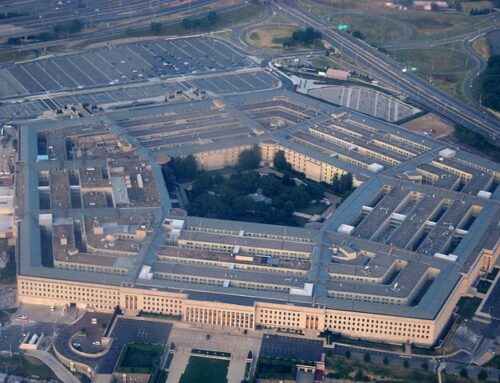Over the course of the last two weeks, the details of the President’s Budget Request for Fiscal Year 2020 (FY20) for the Pentagon have been revealed. We’ve written quite a bit about this jaw-droppingly massive request.
The request includes $576 billion in “base” spending and a massive $165 billion in the Overseas Contingency Operations (OCO) account which is magically “off-budget spending” although it sure counts against the deficit. Add to that a mysterious $9 billion in unexplained “emergency requirements” and you have a staggeringly high $750 billion requested for across-the-board defense programs.
Within that staggering “base + OCO” number, the military departments each received increases in their respective “toplines” for spending. The overall spending request for the Army is $182.2 billion in FY20, a 1.3 percent increase over FY19. The Department of the Air Force request is $204.8 billion, a 5.4 percent increase over last year. And the Department of the Navy, which oversees both the U.S. Navy and the Marine Corps, requests $205.6 billion, a 4.8 percent increase over what they received in FY19.
You might be wondering how the service toplines exceed the alleged base budget number ($182.2 + $204.8 + 205.6 = $592.6). To clarify, the base includes activities such as the National Nuclear Security Administration (nuclear weapons at DOE) and Department of Defense-wide spending. OCO includes additional base funding shoveled into the services budget troughs in a dodge to evade budget caps. Reminder: OCO funds are designed to be spent 1) overseas and 2) on contingencies, in other words, things that aren’t expected. But, $97.9 billion of the $165 billion in OCO is devoted to “OCO for Base requirements” which the Pentagon defines as, “Base budget requirements financed in the OCO budget to comply with the Budget Control Act (BCA) of 2011.” (Emphasis added.) This isn’t compliance; it’s evasion. If OCO was an “agency” of the federal government it would be the second largest, behind the Pentagon in terms of discretionary spending.
So, you would think that $592.6 billion might be enough money for the services, but you’d be wrong.
In what is truly March Madness (at least to the mind of this budget watchdog) the military services have just made public their so-called “Unfunded Requirements Lists” (UFRs). These lists purport to identify needs that the Pentagon couldn’t seem to shoehorn into their massive budget request that was made public less than three weeks ago. For the Army the list totals $2.3 billion. The Air Force list equals $2.7 billion. And the U.S. Navy’s is $3.2 billion. We still haven’t seen a comparable list from the Marine Corps.
What’s on these lists? For the Army, a shopping cart full of readiness items, including a suspiciously large $379 million request to preposition certain undefined “stocks” in Europe. Here’s a thought: how about using some of the $5.9 billion requested for the so-called “European Deterrence Initiative” to cover that? The Army is also, ironically, asking for an additional $564 million in military construction projects while the Secretary of Defense is offering up a long list of other infrastructure priorities to build a border wall. By far the largest portion of the Air Force list, clocking in at $1.9 billion of the $2.7 billion request, is for aircraft. The additional request would cover three KC-46As and twelve more F-35s. The Navy asks for more aircraft (P-8s, E-2s and the carrier version of the F-35) and also requests additional military construction. The irony is thick.
These lists are, in part, a way for the services to shore up underlying requests by saying that “unfunded priorities” will undoubtedly grow if Congress had the temerity to consider reducing spending of cutting programs that are obsolete. And let’s not forget that nearly a quarter of the overall federal budget is deficit financed and full of literally “unfunded” priorities.
If the programs on these UFR lists are added to the toplines of the military departments, the Army would end up with $184.5 billion, an increase of 2.6 percent over last year. The Air Force would be in line to spend $207.5 billion, a 6.8 percent increase over FY19. And the Department of the Navy would get at least $208.8 billion to spend, more if the Marines also have a UFR (Spoiler Alert: they almost certainly do.) That means, with the budget information currently publicly available, the Navy Department would receive a 6.5 percent increase.
March Madness if you’re a fiscal conservative. April Fool’s for everyone else.











Get Social